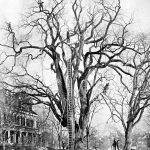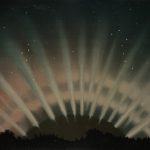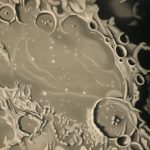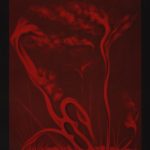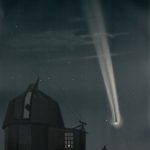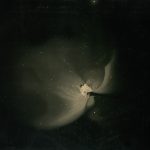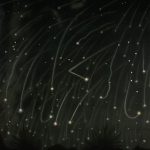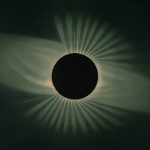Outer space imagery
 Before photography, a French artist drew pictures of outer space. Here are 15 of his most beautiful images
Before photography, a French artist drew pictures of outer space. Here are 15 of his most beautiful images
By Rian Dundon, Timeline From Business Insider
mars space drawing trouvelot ny public library
The planet Mars. Observed September 3, 1877, at 11h. 55m. P.M.Trouvelot Astronomical Drawings/NY Public Library
In the 19th century, science was still an amateur’s game. Any well-heeled gentleman with enough ambition—or obsession—could fixate on a field and, in some cases, pioneer new knowledge.
Étienne Léopold Trouvelot wanted to be an entomologist. So much so, when he decamped to Massachusetts from Louis-Napoléon’s France in 1852, he took with him a cache of Lymantria dispar dispa, commonly known as the Gypsy Moth. Trouvelot had been scheming on a way to produce silk using the moth’s larvae.
gypsy moth elm tree trouvelot ny public library
In 1896 workers attempted to eradicate moth larvae from a large elm tree in Malden, Massachusetts.Library of Congress
Unfortunately, the insects escaped, triggering an infestation which proved impossible to manage. To this day the plague of white moths continues to wreck havoc on northeastern verdancy to the tune of $868 million annually. Call it a war on trees.
But after the episode with his moths, Trouvelot lost interest in bugs and decided to fall back on his former experience as a part-time astronomer and artist.
His illustrations landed him a job at the Harvard observatory, and later a stint at the U.S. Naval Observatory where he was allowed access to state-of-the-art refracting telescopes.
Trouvelot was especially drawn to the sun, its protuberances and the “veiled” sunspots he discovered in 1875. Today his name is attached to separate craters on both the Moon and Mars.
Trouvelot produced thousands of beautifully impressionistic images over his career. His cosmic interpretations came from direct observation, but they also allowed viewers access to a mostly invisible world at a time when people relied on illustrations to show them what they couldn’t see.
Today’s photographic equivalents are no less impressive, but they’ve lost some of the artistry — and authorship — which imbued these fantastical early representations with an ineffable mystery and adventure.
Illustrations courtesy The Trouvelot Astronomical Drawings (C. Scribner’s Sons) via the New York Public Library.
Total eclipse of the sun. Observed July 29, 1878, at Creston, Wyoming Territory.
Trouvelot Astronomical Drawings/NY Public Library
The great nebula in Orion. From a study made in the years 1875–76.
Trouvelot Astronomical Drawings/NY Public Library
Star clusters in Hurcules. From a study made in June, 1877.
Trouvelot Astronomical Drawings/NY Public Library
Mare Humorum. From a study made in 1875.
Trouvelot Astronomical Drawings/NY Public Library
Solar protuberances. Observed on May 5, 1873 at 9h, 40m. a.m.
Trouvelot Astronomical Drawings/NY Public Library
Partial eclipse of the moon. Observed October 24, 1874.
Trouvelot Astronomical Drawings/NY Public Library
The planet Jupiter. Observed November 1, 1880, at 9h. 30m. p.m.
Trouvelot Astronomical Drawings/NY Public Library
Group of sun spots and veiled spots. Observed on June 17th, 1875 at 7 h. 30 m. a.m.
Trouvelot Astronomical Drawings/NY Public Library
The November meteors. As observed between midnight and 5 o’clock a.m. on the night of November 13–14, 1868.
Trouvelot Astronomical Drawings/NY Public Library
Part of the Milky Way. From a study made during the years 1874, 1875 and 1876.
Trouvelot Astronomical Drawings/NY Public Library
The great comet of 1881. Observed on the night of June 25–26 at 1h. 30m. a.m.
Trouvelot Astronomical Drawings/NY Public Library
The zodical light. Observed February 20, 1876.
Trouvelot Astronomical Drawings/NY Public Library
Aurora Borealis. As observed March 1, 1872, at 9h. 25m. p.m.
Trouvelot Astronomical Drawings/NY Public Library
Read the original article on Timeline. Copyright 2017. Follow Timeline on Twitter.
For more on this story go to: http://www.businessinsider.com/hand-drawn-astronomy-pictures-1800s-2017-2?utm_source=feedburner&%3Butm_medium=referral&utm_medium=feed&utm_campaign=Feed%3A+businessinsider+%28Business+Insider%29/#aurora-borealis-as-observed-march-1-1872-at-9h-25m-pm-13

